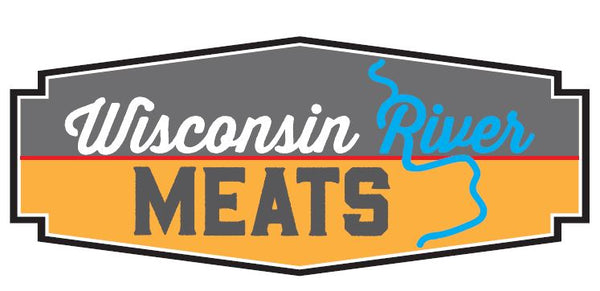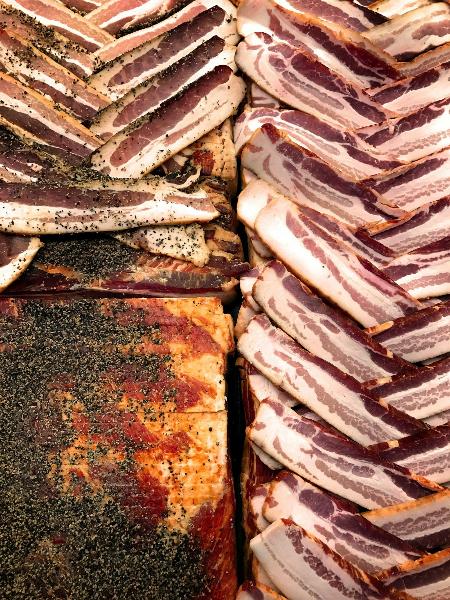The Ultimate Cheese Guide: Freezing, Pets, Gluten-Free Answers, and Storage Tips
Share
Cheese is a beloved part of food culture around the world. Whether you melt cheddar on a burger, slice fresh mozzarella for a Caprese salad, or sprinkle Parmesan over pasta, cheese brings a richness and a satisfying, creamy flavor that is hard to beat. Here in Wisconsin, where cheese is practically a second language, we understand how important it is to know how to store cheese, how to use it safely, and whether your pets can enjoy a nibble too.
At Wisconsin River Meats, we know customers have common and very important questions about cheese, such as:
-
Can you freeze cheese?
-
Can dogs eat cheese?
-
Can cats eat cheese?
-
Is cheese gluten free?
Let’s answer these questions with confidence and clarity. We will also cover how to store cheese, what to do if mold develops, and how to pair cheeses with Wisconsin meats to make unforgettable snack boards.

Can You Freeze Cheese?
The short answer is yes, you can freeze cheese, but there are a few things to keep in mind. Cheese is a dairy product with a delicate texture, and freezing can change its consistency.
Harder cheeses like cheddar, Swiss, Colby, or Monterey Jack freeze the best. They tend to keep their structure relatively well and can be shredded, sliced, or melted after thawing with minimal change in quality.
Softer cheeses like cream cheese, cottage cheese, ricotta, or fresh goat cheese don’t freeze as gracefully. These cheeses often separate or become grainy when thawed, which is not appealing if you plan to eat them fresh, but they can still work in cooked dishes such as casseroles or pasta bakes.
How to Freeze Cheese
-
Cut cheese into usable sizes before freezing. Smaller portions are easier to thaw and avoid repeated thawing and refreezing, which is not recommended.
-
Wrap cheese tightly in plastic wrap or wax paper. Then place the wrapped cheese in a freezer bag or airtight container to prevent freezer burn.
-
Label and date the cheese so you can keep track. Cheese is best used within 3–6 months of freezing for top quality.
-
Thaw slowly in the refrigerator. Rapid thawing at room temperature can result in a mushy, watery consistency.
If you are making dishes that call for melted cheese, like pizza, soups, sauces, or casseroles, frozen cheese will perform beautifully. But if you want cheese for a fresh cheese board or to slice for crackers, it is best stored in the fridge and enjoyed fresh.
Can Dogs Eat Cheese?
A lot of dog owners wonder whether it is safe to share a bite of cheese with their four-legged best friend. The good news is that dogs can safely eat cheese in moderation. In fact, many trainers use small cubes of cheese as a high-reward treat because it is high-value and easy to carry.
However, there are some precautions:
-
Lactose intolerance: some dogs have difficulty digesting lactose, which can cause stomach upset, gas, or diarrhea.
-
High fat content: cheeses are calorie dense and high in fat, which can lead to obesity if you feed too much.
-
Additives and seasonings: avoid feeding dogs flavored or spiced cheeses, especially those with garlic, onion, or chives, which are toxic to dogs.
A small cube of plain cheddar, mozzarella, or Swiss is generally fine for most healthy dogs. Limit to an occasional treat rather than a daily habit.
If your dog has pancreatitis, a weight problem, or food sensitivities, talk to your veterinarian before giving cheese.

Can Cats Eat Cheese?
Many people assume cats can eat cheese because cartoons show them stealing milk and dairy products. But in reality, most adult cats are lactose intolerant. After kittenhood, many cats lose the enzyme needed to digest lactose, which means cheese can cause vomiting or diarrhea.
That does not mean cats cannot ever have cheese, but it should be a rare, tiny treat.
Guidelines for feeding cheese to cats:
-
Choose plain, hard cheeses like cheddar rather than soft, high-lactose cheeses
-
Keep portions very small — think a pea-sized nibble
-
Watch for digestive upset afterward, and stop giving cheese if you see problems
Also, never feed cats cheese with garlic, onion, spices, or herbs mixed in, since these ingredients can be toxic to felines.
Bottom line: cheese is not toxic for cats in small amounts, but many cats simply do not tolerate it well.
Is Cheese Gluten Free?
Most natural cheeses are naturally gluten free. Cheese is made from milk, bacterial cultures, salt, and enzymes — none of which contain gluten. That makes cheese a safe choice for people with celiac disease or gluten intolerance.
However, there are some exceptions you should be aware of:
-
Processed cheeses: cheese spreads, packaged shredded cheese blends, and flavored cheeses can contain additives or stabilizers with gluten.
-
Cross-contamination: some cheese factories process wheat-based products, so trace gluten could be present.
-
Beer cheeses: spreads made with beer may not be gluten free if the beer was made from barley or wheat.
If you are strictly gluten free, read the ingredient label on packaged cheeses, and look for “gluten free” certification if you have any doubts. But traditional block cheeses — cheddar, Swiss, mozzarella, provolone, Parmesan, brie — are naturally gluten free.

How to Store Cheese
If you love cheese, you know how frustrating it is when it spoils before you can finish it. Proper storage is the key.
Hard Cheeses (cheddar, Swiss, Parmesan, gouda):
-
Wrap in wax or parchment paper to allow breathing
-
Place the wrapped cheese in a loose plastic bag or storage container
-
Store in the vegetable drawer or cheese drawer of your refrigerator
Soft Cheeses (brie, camembert, goat cheese):
-
Keep in their original wrapping or resealable container
-
Store between 34°F and 40°F
-
Check regularly for mold
Fresh Cheeses (ricotta, cottage cheese, cream cheese):
-
Store tightly sealed in their original containers
-
Consume quickly, as these have a short shelf life
General Tips:
-
Change wrapping every few days to prevent mold growth
-
Avoid wrapping cheese too tightly in plastic wrap, which can trap moisture and promote spoilage
-
Label the purchase date if you buy in bulk
What to Do if Cheese Gets Moldy
This is a common question. Here’s the rule of thumb:
-
Hard cheese: mold generally stays on the surface. You can cut off at least one inch around and below the moldy spot and eat the rest.
-
Soft cheese: if mold appears, it is best to throw it away. Soft cheeses can allow mold to spread below the surface.
Always trust your nose and eyes — if the cheese smells foul, feels slimy, or looks very unusual, it is safest to discard it.
Best Cheese Pairings with Wisconsin Meats
At Wisconsin River Meats, we often help customers put together cheese and sausage boards for parties, holidays, or hunting trips. Some classic pairings include:
-
Smoked cheddar with venison summer sausage
-
Colby or colby jack with beef sticks
-
Aged gouda with smoked pork bratwurst
-
Swiss or gruyere with cured ham
-
Mozzarella paired with fresh Italian sausage
Don’t be afraid to mix mild and bold cheeses, and always add some crunchy crackers, fresh fruit, or pickled vegetables to round out the flavor.

Frequently Asked Questions
Can you freeze shredded cheese?
Yes, shredded cheese freezes better than block cheese because it is easier to portion. Place it in a freezer-safe bag, squeeze out the air, and use within 3 months.
Is cheese safe for puppies?
In small amounts, yes. Puppies can tolerate a bit of plain cheese, but watch closely for any digestive upset.
Why does my cheese sweat?
When cheese goes from cold to room temperature, its fats soften and release moisture — this is normal. Pat off moisture with a paper towel if needed.
Is vegan cheese gluten free?
Many are, but some contain wheat-based stabilizers. Always check the label.
How Cheese Fits Into a Balanced Diet
Cheese can be part of a healthy diet in moderation. It is high in calcium, protein, and healthy fats but also calorie-dense.
Tips to keep cheese a healthy treat:
-
Eat in small portions
-
Pair with fresh fruits or veggies
-
Choose stronger-flavored cheeses so you use less
-
Balance with lean meats and whole grains
A slice of aged cheddar alongside lean turkey sausage, for example, is a protein-rich, satisfying snack.
Final Thoughts
Cheese is one of the world’s most beloved foods, and for good reason. It is versatile, satisfying, and pairs beautifully with meats, fruits, and breads.
Here’s what to remember:
-
You can freeze cheese if needed, especially hard or shredded varieties
-
Dogs can enjoy a tiny bit of plain cheese as a treat, but avoid giving too much
-
Cats are generally lactose intolerant, so only offer small nibbles occasionally
-
Most natural cheeses are gluten free, but watch for additives in processed cheese products
Whether you’re creating a classic cheeseboard, adding cheese to a burger, or melting it into a casserole, always store cheese properly, watch for spoilage, and handle it with care.
At Wisconsin River Meats, we know a great cheese goes hand in hand with great meat. If you’re planning a party tray, a hunting cabin snack spread, or a family cookout, visit our Mauston location or explore our online store for the best sausage, bratwurst, smoked meats, and Wisconsin cheeses.
Our team is here to help you pair, serve, and store cheese the right way, making your meals even more satisfying. Cheese is a classic part of Midwest living — and it deserves to be celebrated, from the first creamy slice to the last perfect bite.

